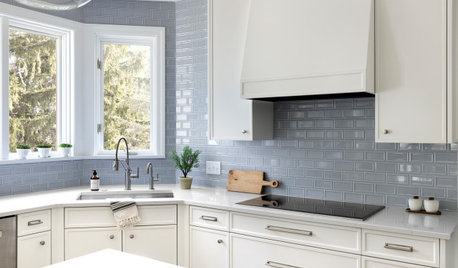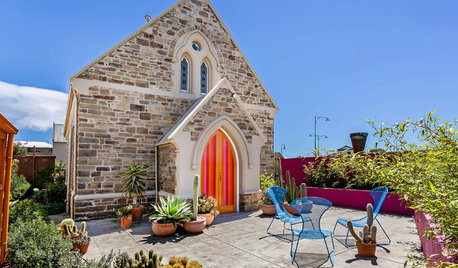My experience with 34 varieties in the Deep South
This next year will be my fifth year of growing vegetables seriously here in east central Mississippi. I am a transplant from further north, so when I arrived here 25 years ago, I had no idea how different gardening is here in the Sunbelt.
Out of frustration, I concentrated on ornamentals for a number of years, but just missed home grown tomatoes. I began growing them in pots about ten years ago, but then I missed beans too. So, five years ago, I built 9 raised beds and jumped in with both feet.
I have learned a lot. And am still learning. Every year about this time, I pore over seed catalogs trying to discern which ones might perform well in my difficult conditions of high heat, horribly high humidity, pervasive soil disease, and larger than average insect populations. I always wish there were more GW posters from the Deep South. (Farmer dill, I love you!) I always wish I could find a list of tomatoes that do well HERE.
It finally occurred to me that maybe I am at a place now where I can start this trend. So, I am posting here a list of all the varieties that I have grown over the last four years.
I am not a scientist and I cannot guarantee that I have grown enough plants of any one variety enough times to be considered a true representative sample. But, this is my experience. I hope it helps someone.
I grow tomatoes for fresh eating, for canning, and for sauce. I grow organically. The first year, I planted a lot of "colored" tomatoes, meaning other than red. I learned that year that I don't like colored tomatoes for canning. My 85 year old mother in law utterly refuses to eat anything that doesn't "look" like tomatoes, and honestly, greens and purples look awful to me, if mixed with reds. (Some people like chocolate. Some people like vanilla.) So, I plant fewer of them now and use them strictly for slicing on a plate (with a red one for her).
A word about my soil: I double dig my beds ever year, working in homemade compost and well rotted manure, when I can get it. The last two years I have grown red clover over the winter and turned it in too. I often use organic tomato fertilizer if I can't get manure. (My soil tests always show that I am low on nitrogen.) I fertilize at planting and again at fruit set. I routinely use a thick mulch of pinestraw on my beds. I cage my plants and place them two feet apart. I have never had problems with BER or cracking in my beds.
I usually plant tomatoes out the first half of April. Harvest begins in mid to late June. By late July, our heat has become so intense that the plants stop setting fruit. And, by then, early blight is usually creating havoc with the plants too. So, I typically pull the plants out and plant something else in the beds.
I always have 3 or 4 Cherry tomatoes in BIG pots. They do well and usually keep us in salad tomatoes until first frost in early November. Because of this, they are precious to me and I choose them with care.
So, that being said, here's my list. I would love to hear your comments and opinions on these, especially if you live in the Deep South. Also, I would REALLY LOVE to hear about ones you've had success with in this region that I have not yet grown.
Amish Paste: The plant was never happy. It succumbed to blight very quickly. It made really big fruit, I'll say that. And they had pretty good flavor. But it didn't make enough fruit to earn its keep. This is one I traded away every bit of my seed. It's supposed to be a winner elsewhere, so I don't feel guilty.
Arkansas Traveler: Not a terrible tomato. Not a great one. The fruit were large beefsteaks. Production was no better than Brandywine, but flavor was nowhere near as good. I grew it my first year when my soil was less than ideal. If I ever have space I might try it again just because it gets such good reviews.
Atkinson: Bigger than average production of unblemished fruit. Not as flavorful, but not terrible either. The plant was healthier than average right from the seedling stage. Probably won't grow again simply because of limited space, but I would still call this a pretty good tomato overall.
Aunt Ruby Green: If there is any tomato that I would call distinctive, it's this one. It's not terribly productive (better than Brandywine, though), but the fruit are succulent. It has such a zingy taste, yet it's not bitterly acidic. I love it. But, I don't love it for canning. I just can't seem to figure out what to do with that green fruit that my family will embrace. So I just plant a couple for fresh eating. They are beautiful on a plate.
Big Beef: A hybrid beefsteak. It is dependable. It makes a better than average crop of large, unblemished beefsteaks. Flavor is very good. Very good for fresh eating and for canning. I have planted it every year.
Black Cherry: I grew this in a large pot 2 years ago and it did very well. It pumped out large sized cherry tomatoes all summer long, despite a dreadful hornworm infestation that I really never got entirely under control. It was a flavorful fruit, though not as good to me as Sungold. I will grow it again this year.
Black Krim: Large beefsteak type with purple brown skin and green shoulders, which never seem to ripen. Taste just shy of Brandywine's deliciousness, but produced probably twice the fruit. Wonderful for fresh eating, but I didn't like the color of the flesh in jars. It looked too much like cow's liver for my taste. I didn't grow this one last year and really missed it. My friends are already reminding me to start it this year.
Brandywine OTV: I had such high hopes for this one! Planted it in a double dug bed well amended with rotted manure and compost. I don't think the fruit was even as productive as the Ferry Morse Brandywine I have grown before. Plants succumbed to early blight quickly. Not particularly productive.
Brandywine (Ferry Morse seed from WalMart): The one by which I measure all others for flavor. Grew this my very first year and every year since. The fruit were huge and delicious. But the plants only made about 6 to 8 fruits each. Still. So yummy I will plant again.
Celebrity: Smaller plants. Ranked with Rutgers for the best yields my first year of growing. Flavor not fantastic, but still very good. Were great for canning. Will plant again.
Cherokee Purple: Look very much like Black Krim. Did not produce as well. Did not taste as good. Did not have as much vigor. Nuff said.
Costoluto Genovese: I just really want to grow a pretty fluted tomato! But I guess it won't be this one. I have tried three years to get the seeds to germinate (from two different sources). Nada. Zip. It is the only tomato I have ever failed to germinate. Go figure.
Creole: I got this seed from a fellow GW member. Oh, thank you! It liked me! It was my favorite tomato last year. The plants were healthy and productive. The fruit was perfect medium to large sized globes and the flavor was very good. It's going to become one of my canning mainstays. Good for fresh eating too.
Eva Purple Ball: A nearly complete failure. The plants were not happy in my garden from the very start. They never got very large, nor did they produce much fruit at all. It was nothing to write home about with regard to flavor either. The seed was an impulse buy, and although I bought it from SESE, I suspect that the problem was my climate or conditions more than anything else. Just don't know what.
Evergreen: I grew this one in the ground one year and in a very large pot the next year. Definitely better in the ground. Made huge green fruit. Pretty good flavor in the ground, almost no flavor in the pot. Won't grow again just because Aunt Ruby Green is so much tastier.
Golden Jubilee: I grew this one my first year. It didn't make very many fruits, but they were of outstanding flavor. Somehow, I have lost its seed. Anybody want to trade? I would definitely grow it again.
Green Grape: I grew this in a large pot last year. It made a very large plant with lots of fruit. The tomatoes were not quite golf ball size. They had very good flavor, but I really disliked the color of it when it was ripe. It was a yellow green that was unappetizing to me. They were good for oven roasting. Still on the hunt for a green cherry.
Isis Candy: I grew this cherry in a pot. I hated the color, thought it was unappetizing. The fruit tended to go from underripe to overripe in one day. I threw a lot of them away. Won't grow again.
Juliet Cherry: Ick-y. The plant did well in a pot. Made tons of the blandest, driest, most unappetizing fruit I have grown. They were too small to want to mess with to make sauce, and weren't fit for anything else, if you ask me. (Isn't it a shame that I am so shy with my opinions?)
Juanne Flamme: I grew this tomato very early on when my soil in my beds was still less than ideal. It made small to medium sized apricot colored tomatoes with virtually no flavor at all. It gets such great reviews that I can only assume it didn't like the south.
Matina: A smaller indeterminate plant that might have been happier in a bed with other smaller indeterminate plants, or even in a pot. I was not impressed with the vigor of the plants or the flavor of the fruits. Probably just not a good one for the south.
Mortgage Lifter: I have grown this tomato twice. It doesn't like me. Even the seedlings are weaker than most. It makes a tall rangy plant with very few fruit. The fruits are fine, well formed, unblemished, but I don't think there is anything outstanding about their flavor. Several others I have grown are far better.
OSU/P20 Blue: A fellow GW member sent this seed to me. Thank You! It was a fascinating plant. It made tons of somewhat larger than golf ball sized tomatoes in clusters. They turn blue/black when ripe. The skins are a bit tough but I really liked the flavor, and they performed well in my climate. That first year I grew them, I found them a pain to can because they were more difficult to peel and they were so small. But I am going to grow them again this year, specifically for roasting in the oven. Plus, I bought a Victorio strainer last year so it won't matter about the peeling either.
Ozark Pink: I grew this one for the first time last year. It made lovely, unblemished medium to large size fruit and a lot of it. The flavor was not bad, nor was it great. But because of its high production, I would grow it again. The plant still looked pretty decent when I pulled it out in July.
Prudens Purple: Another impulse buy in 2013. Even the seedlings started out small and somewhat weak looking. It never made much foliage or size, and the fruit was so small and sparse that I can't really even tell you what it was like. Failure. But I learned something.
Red Pear: I love the look of this tomato! It is so pretty on the plate, BUT nearly every fruit cracked. I grew it in a large pot. It made tons and tons of tomatoes, the vast majority of which were thrown away. It had nice flavor, though not outstanding. Since I only grow cherries in pots, I will not grow it again. I have to wonder if it would have done better in the ground where it was not being watered with the hose every single day. Anybody want some seed?
Rose: This was named one of the top ten best tomatoes by Fine Gardening Magazine the first year I built my raised beds. (So was Juanne Flamme) Not here. Not in my garden. It made a nice big healthy plant with quite a large number of beautiful, unblemished large pink tomatoes. Absolutely no flavor. Oh well.
Rutgers: This was the very first heirloom I ever grew. It was recommended by a fellow GW member. Small plants. Do well in pots or the ground. Very productive. Great flavor. These were winners in producing a great go to crop for canning. And, they did this well my very first year of planting.
San Marzano: I grew this in a large, self watering pot. It made a very big crop on very small plants. They weren't very good for fresh eating, but they made wonderful tomato sauce. A keeper.
Sungold: The cherry that I grow every year no matter what. It does very well in a large pot. I have never seen it diseased. Even insects are less ferocious on it. It makes a big crop. Huge crop. And delicious. The one by which I judge all other cherries. I have yet to top it.
Sweet Million: Really sweet cherry. Sweeter than Sungold, almost too sweet, but still great for salads and eating out of hand. Also did well roasted in the oven. HUGE plant. Enormously productive. I started roasting them to use them up. My second choice for cherries so far.
Tommy Toes: Grew in large pot. Large sprawling plant. Fruit is about golf ball shape. Nice tomatoey taste. Tough skins. The color when they were ripe was not especially pretty. Produced all summer, despite bad hornworm infestations. Will grow again. It's tough, productive, and has good taste.
Tropic VFN: I have grown this tomato all four years. The first year it was the star of the garden. The beefsteak fruit was large, unblemished, and very tasty. The plants weathered blight and heat very well. (Though it did stop producing when July temperatures rose above 95 degrees.) It has never done as well again as the first year, possibly due to tighter spacing in the garden. But it's still a winner.
Uncle Mark Bagby: I grew these last year in well manured double dug soil. They made nice strong plants and the largest fruit of the year. Really big beefsteaks. Good flavor, not great. And not a lot of fruit. Will I grow again? Maybe.
Comments (15)
bcfromfl
10 years agolast modified: 9 years agoThanks for your post, donnabaskets. Wow -- you've sure grown a lot of different varieties!
I'm just north of Panama City, FL. I feel your pain! I have about the identical season as yours, with 30 days' worth of tomatoes between June and July. We have to grow in tubs because of bacterial wilt in the soil, but blight gets the plants in the summer anyway.
I'm trying a few of the varieties you described this season, but the only one that seems to work well and taste great is Big Beef.
Previously I was growing in 18-gallon tubs, but they finally oxidized and crumbled, so out they went with the trash. I bought 20-gallon tubs to replace them, and will amend my organic/perlite mix into the recommended 5:1:1 for containers.
Hope you have a better season this year!
-Bruce
Donna
Original Author10 years agolast modified: 9 years agoI think one of the things that I have learned is the definition of a "good" season here. I learned to garden in Indiana, a million years ago. A good season in the south would be a terrible one in Indiana. It took a long time to figure that out.
But you know what? It looks like I canned enough tomatoes from 23 plants last summer to last my family until tomatoes start coming in again this next summer. I call that a good season. (now.)
Related Professionals
Beachwood Landscape Architects & Landscape Designers · Cincinnati Landscape Contractors · Dudley Landscape Contractors · El Sobrante Landscape Contractors · Lees Summit Landscape Contractors · Mission Bend Landscape Contractors · West Haverstraw Landscape Contractors · Ames General Contractors · Claremont General Contractors · Erlanger General Contractors · River Forest General Contractors · Spanaway General Contractors · Welleby Park General Contractors · New York City Decks, Patios & Outdoor Enclosures · Richmond Decks, Patios & Outdoor Enclosureskathyb912_in (5a/5b, Central IN)
10 years agolast modified: 9 years agoI'm not even in the south and I enjoyed reading this post. Thanks for sharing your experiences, Donna.
I'm intrigued by your growing cherries in large pots, especially Sungold. How big of a pot and how do you support it? Here in Indiana, my Sungold gets so big, part of it drapes over the top of our 6' fence and grows all the way down the other side. This year, I plan to be a bit more assertive with the pruning. Do they stay smaller for you?
This post was edited by kathyb912_IN on Tue, Jan 28, 14 at 19:36
VivVarble
10 years agolast modified: 9 years agoFantastic information, thanks. It's my first "real" year gardening and my first year in SE Texas. I'm doing Rutgers, Red Currant (cherry), and roma. I'm hoping to can some for salsa and sauce. I'm also trying 1 cherokee purple, it's so different from anything I've ever tried before. I can just picture the tomato sandwich that would make, mmm mmm! Good luck this year!
~Viv
hoosier40 6a Southern IN
10 years agolast modified: 9 years agoThanks for the reviews, some good info in there. Not good news for a few of the varieties I am going to grow this year but hopefully they do better in Indiana.
VivVarble
10 years agolast modified: 9 years agoFantastic information, thanks. It's my first "real" year gardening and my first year in SE Texas. I'm doing Rutgers, Red Currant (cherry), and roma. I'm hoping to can some for salsa and sauce. I'm also trying 1 cherokee purple, it's so different from anything I've ever tried before. I can just picture the tomato sandwich that would make, mmm mmm! Good luck this year!
~Viv
smithmal
10 years agolast modified: 9 years agoGreat post. I'm in the NE but surprisingly I see much of the same results that you have. My growing season is a bit longer as I don't have to deal with nearly the heat and humidity that you do although my transplant date is the middle of May.
In terms of your questions regarding green cherries, the two that I know of that people give favorable reviews of are:
- Green Doctors/Green Doctors Frosted
- Green Zebra CherrySome other prolific cherries you could try is Matt's Wild Cherry and Mountain Magic (F1). I haven't tried Sweet Million, but have tried Sweet 100 Million with good success. Also Dr. Carolyn's is very prolific and robust. It's a little later to develop than your typical cherry so it would be interesting to see if it does well in your climate.
In terms of blacks, try Indian Stripe. It supposedly has a very similar tast to CP, but is more prolific and provides fruits earlier than CP.
In terms of yellows try Hugh's.
In terms of reds, I've heard good things about Ramapo (F1).
You could also try your hand in grafting your tomatoes to rootstock to improve soil pest resistance and possible introduce more vigor to your tomato plants. There are various opinions on GW about the validity of grafting, but I think in your environment it would be a good thing to try (if nothing else at least you could buy the "Grafting - Been there, done that." There are expensive rootstock seeds you could purchase like Beaufort, or you can purchase cheaper hybrid seeds that already have soil pest resistance genes in them like Celebrity. You could even try your hand hand at making a 'Frankensteinian" tomato-eggplant mix using the eggplant rootstock "Black Beauty" which some people swear by. If you want to learn more about grafting type in "Cary Rivard" in Youtube. Dr. Rivard has a bunch of conference seminars that were video tapped and are now on Youtube.
smithmal
Donna
Original Author10 years agolast modified: 9 years agokathyb, I do use very big pots. Eighteen inches in diameter at a minimum, but I really prefer 24 inches in diameter. My sungolds (really all the cherries) do get very large. I use 18 inch diameter tomato towers from Gardeners Supply in the pots tied to a stake that I drive along the side of the pot to the very bottom. I chanced upon a huge tree pot from a nursery this year. It must be 30 to 36 inches in diameter. I cannot wait to try a Sungold in that one next year. The advantage to the pots is the plants don't get blight so they produce all summer long. I situate the pots so they will get some afternoon sun and they produce through the highest heat, though somewhat more slowly.
Mr. Who, my money is on your climate. I don't think I ever had a tomato fail when I was gardening in central Indiana in the seventies. Such wonderful soil, such a great climate. (Though you can surely have those winters!) To this day, the smell of tomatoes cooking on the stove takes me back to glorious October afternoons in Anderson.
Smith, grafting is a very interesting idea. I never considered it as a way around the blight that is everywhere in our soil. I may try that one year. And thank you for the suggested varieties!
ABlindHog
10 years agolast modified: 9 years agoGreat post, on a topic that I agonize over every season. Your thoughts reminded me that Creole is a tomato that I really need to try. It has been inched off my list for lack of space the last couple of years but you have convinced me to find a way to work it in this year.
Thank you for the reminder that October afternoons in Indiana really were glorious. I was only there for a couple of years of high school, but after all these years I can still smell Warsaw in October.smithmal
10 years agolast modified: 9 years agoIn terms of blight control, grafting will do nothing as blight is a fungal foliage infection. Grafting will protect you from diseases that originate in the soil and gain entry through the root system.
Blight on the other hand is a fungal disease that travels through the air and/or may be located in the soil from past disease outbreaks.
There are many articles that discuss blight control, but it is my understanding that best way to control blight is via preventative spraying and maintenance. Once blight starts, you have very little options to control it. The article linked below suggests that copper based fungicides provide the best protection, but if started after a plant is exposed to blight, no fungicides were particularly effective. Therefore it is essential that you control blight by spraying BEFORE you have symptoms. Spraying must be repeated every 5 to 7 days.
The article also indicates cherry tomatoes such as Matt's Wild Cherry and Mountain Magic (F1) show good natural resistance again blight.
It would also be advisable to promote good air circulation/ventilation where ever possible. Good air circulation around your tomatoes will greatly increase water evaporation off of leaves. I use the "drop line" technique and typically only grow 2 to 3 steps per plant to reduce foliage crowding and promote good air circulation. It is also advisable to use drip irrigation techniques rather than surface watering to reduce moist environments on your leaf surface which is the main reason why blight takes hold.
Your best bet is to use your extension service to keep up with blight monitoring in your area. If blight has been noted, immediately start protecting your tomatoes with a copper based fungicide.
smithmal
Here is a link that might be useful: Blight Control
arley_gw
10 years agolast modified: 9 years agoDonna, thank you for your post. It will be helpful. I'm about 20 miles east of Augusta GA, on the border of 7b and 8. I'm just now getting serious about tomatoes (i.e., last year was the first year starting my own plants from seed rather than depending on the local nursery's selection). A few of those you've tried, I've tried as well, and I'll share my experience about some others I've tried in a climate not too different from yours.
Agree with you with Black Krim. Did well here, taste very good, production pretty good, but appearance was a little offputting. Black Cherry extremely productive, but the taste wasn't particularly great. Not bad, just not exceptional--same with Opalka paste tomatoes. Great productivity, taste ordinary.
Mortgage Lifter and Arkansas Traveler: okay in taste and production, but not exceptional in either.
By far the best two tomatoes taste-wise were Marianna's Peace and Stump of the World. Unfortunately these were also the least productive. But what they did produce tasted fantastic.
This year I'm replanting Marianna's Peace, and for the first time for all of these I'm trying Chapman, Wes, Neves Azorean Red, KBX, Spudatula, San Marzano Redorta, KBX, Paul Robeson, Rebel Yell (I understand it's a cross with Stump of the World being one of its parents), Moravsky Div, Omar's Lebanese and Super Sioux. I figure at least a few of those will do well.
By the way: east central Mississippi: two of my four grandparents are from Kemper county, and a third one is from Columbus. Have you ever eaten at the Dinner Bell in McComb? worth a trip.
materhead377
9 years agolast modified: 9 years agoGreat post, thanks. I planted Brandywine last year for the first time and the one tomato I got was divine, best ever...but I think it's just too hot here for the Brandywine. I have had success with Cherokee Purple. Trying Paul Robeson this year for first time, I am a bit skeptical because I saw (after I bought and planted it) that it is a Russian variety so it probably will not like the heat...we will see... that said, I see lots of southerners liking the Black Krim, which is another Russian variety, so I am hoping for the best. Let's keep this post going.
seysonn
9 years agolast modified: 9 years agoOf the list given I am growing just 4 of them.
CHEROKEE PURPLE, MATINA, SUNGOLD and MORTGAGE LIFTER.
Then instead I am growing, additionally :PINEAPPLE, LEGEND, SIBERIAN, SILETZ, KUMATO, JAPANESE TRIFEL BLACK, STUPICE, BLOODY BUTCHER, EARLY TRAET, BUSH BEEF STEAK, RED CHERRY (no name), GREEN ZEBRA, STRIPY(?), SILVERY FIR TREE.
Because we have relatively cool and short season, most of mine are EARLY and MID season.
















deadhead61